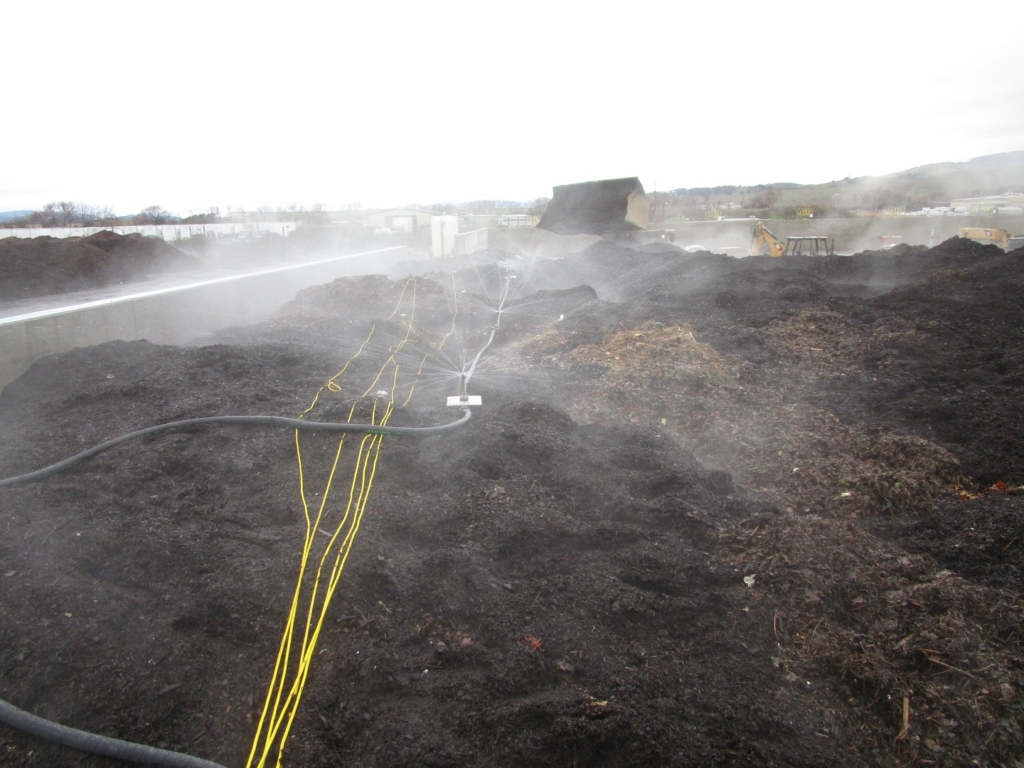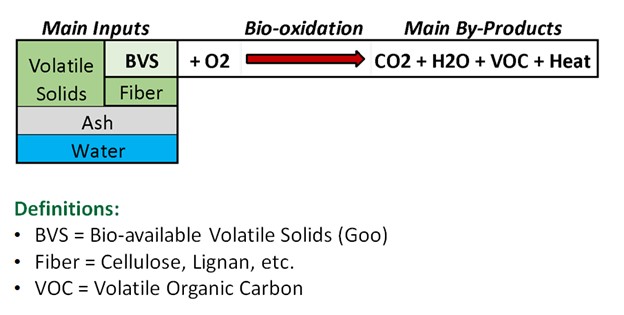It may come as a surprise to some that composting consumes large quantities of water. In our experience, the average composting site can end up consuming nearly half its weight in gallons of water per year. As an example, a site that processes 50,000 tons of compost annually may require as many as 25,000 gallons of water in a single year.
A thorough understanding of water usage requirements is critical to the design and development of a new municipal compost operation for many reasons, including compliance with regulations, permitting requirements, environmental impact, and keeping operational costs in check.
This blog post captures important factors to consider when planning a new site and calculating water usage requirements.

Water is a vital component at multiple phases in the composting process. The figure below shows multiple points during the process where water is typically applied.

The volume of water consumed by a composting site depends on several factors, including incoming feedstock properties, local weather conditions, and the type of composing process employed.
Incoming feedstock for a compost pile should start near 55-60% moisture content to ensure conditions needed for decomposition. Composting can become moisture-inhibited around 30-35%—that is, the aerobic process slows with inadequate moisture. Over time, feedstock moisture tends to decrease.

This chart shows how moisture decreases over time during aerobic composting. Once the material reaches around 45% moisture, the bio-degradation rate begins to slow. If continued (typically beyond ~22-28 days), moisture level drops further and the biodegradation rate begins approaching zero.
Local weather has a direct impact on incoming feedstock conditions. In dry climates or in applications with long retention time, it is often necessary to add water to maximize the time where moisture conditions allow rapid composting. Additionally, surface irrigation is also important for dust control in dry climates.
Conversely, in climates with frequent, heavy rainfall, the starting mix moisture level may exceed the BMP threshold. In that case, we recommend adding a drier amendment (commonly woody biomass) to decrease the starting moisture. When initial moisture exceeds ~62-65%, the compost becomes inhibited and achieves very slow rates of bio-oxidation.
Perhaps the factor with the greatest impact on water usage is the composting process type itself. Key variables fall into pile geometry and bio-oxidation rate. For example, covered aerated static pile (CASP) composting minimizes surface area as compared to a turned windrow system, thereby minimizing pan evaporation moisture loss, which in turn reduces additional moisture requirements.
Additionally, the biodegradation rate has a tremendous impact on moisture loss. Since water is a byproduct of aerobic composting, this means that faster bio-oxidation leads to increased moisture release. While biodegradation rate is a function of both process conditions and mix characteristics, selecting a system type which enables better process conditions will tend to increase the bio-oxidation rate.

Duration of the composting process also impacts water requirements. More stabilization of a compost pile (that is, longer duration) tends to require a greater volume of water.
For an accurate picture of how much water your municipal compost facility will consume, you will need the following information:
Based on decades of commercial compost system design for sites all over the world, ECS has developed a proprietary model for calculating water consumption requirements and can help devise a composting solution that minimizes odor, cost, and volume of water needed. Lean on ECS’s water modeling service to support planning for your new composting site today.